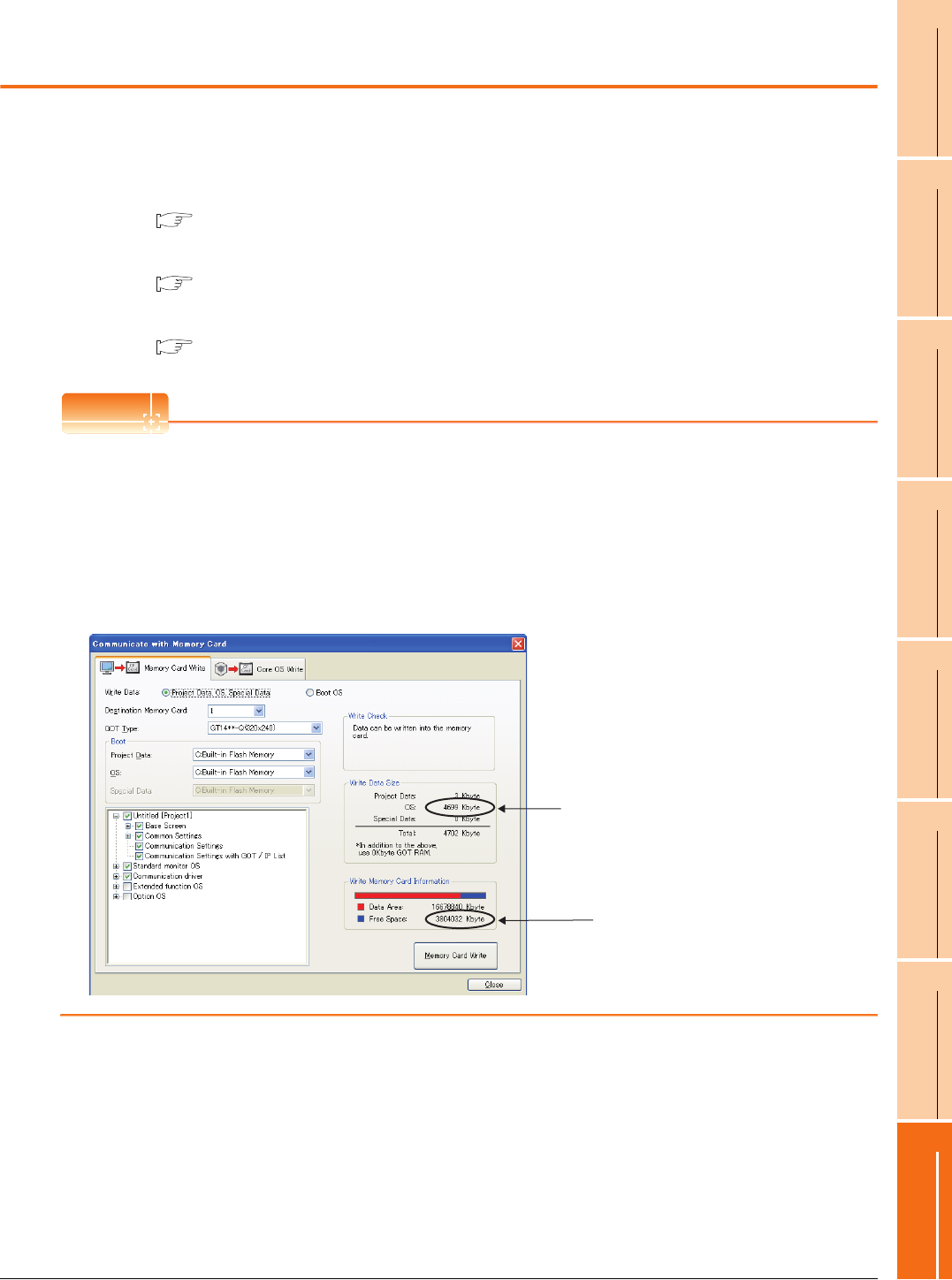
16. INSTALLATION OF COREOS, BOOTOS AND STANDARD MONITOR OS
16.2 Prior Preparations for Installing BootOS and Standard Monitor OS
16 - 3
9
UTILITY FUNCTION
10
COMMUNICATION
INTERFACE SETTING
(COMMUNICATION SETTING)
11
DISPLAY AND
OPERATION SETTINGS
(GOT SET UP)
12
CLOCK SETTINGS AND
BATTERY STATUS DISPLAY
(TIME SETTING AND DISPLAY)
13
FILE DISPLAY AND
COPY (PROGRAM/DATA
CONTROL)
14
GOT SELF CHECK
(DEBUG AND SELF
CHECK)
15
CLEANING DISPLAY
SECTION (CLEAN)
16
INSTALLATION OF
COREOS, BOOTOS AND
STANDARD MONITOR OS
16.2 Prior Preparations for Installing BootOS and
Standard Monitor OS
For the installation using GOT, the SD card or USB memory storing BootOS or standard monitor OS is required.
For the method of writing BootOS and standard monitor OS in the SD card or USB memory, the following three methods
are available.
(1) [To Memory Card] from GT Designer3
GT Designer3 Version1 Screen Design Manual (Fundamentals)
(2) Uploading from other GOT (BootOS or standard monitor OS has been installed)
13. FILE DISPLAY AND COPY (PROGRAM/DATA CONTROL)
(3) Using SD card that stores data with OS boot drive set to A drive
GT Designer3 Version1 Screen Design Manual (Fundamentals)
POINT
POINT
POINT
Precautions on writing BootOS, standard monitor OS in SD card or USB memory
When writing BootOS, standard monitor OS, etc. in the SD card or USB memory, be sure to execute by the utility of
other GOT, GT Designer3.
The installation is not executed properly with the SD card or USB memory to which uploaded from the utility of GOT
or copied by software other than GT Designer3.
Note the available capacity of the SD card or USB memory.
The available capacity of BootOS and standard monitor OS can be confirmed by [To Memory Card] of GT
Designer3.
Available space of the SD card
or USB memory
Capacity of standard monitor OS


















